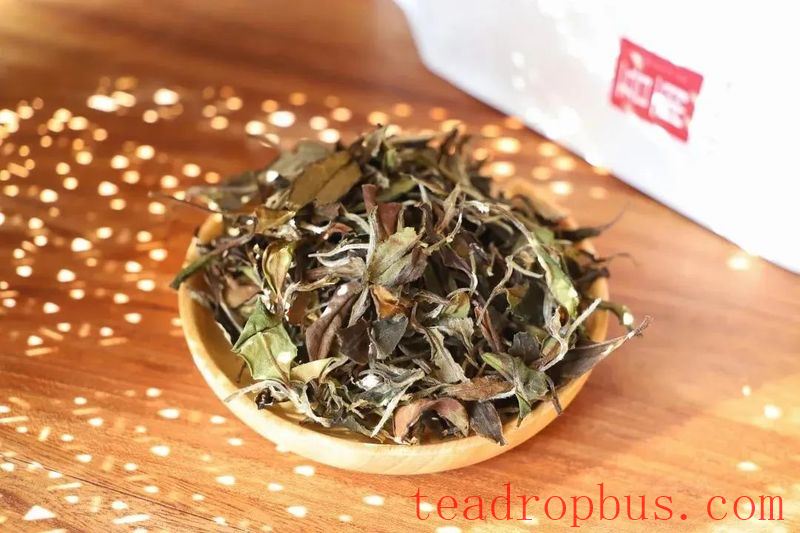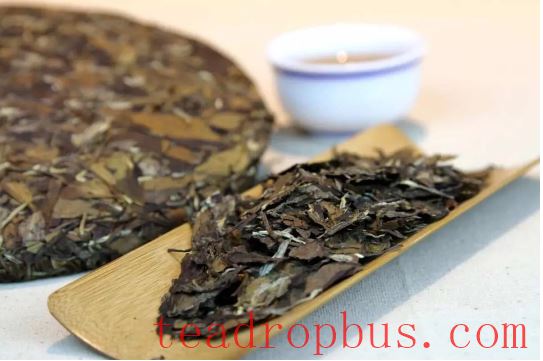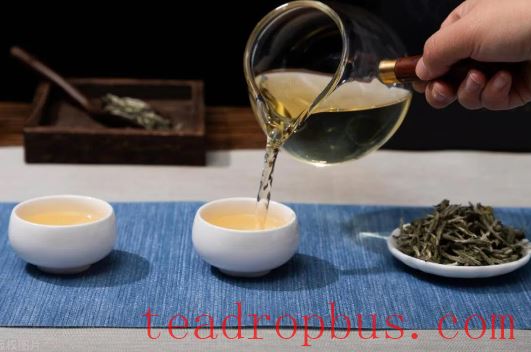I. Introduction
In the world of Tea, White Tea stands out with its unique flavors and charm, attracting many enthusiasts. For beginners, standing at the crossroads between new and aged white tea, one often faces a dilemma: should they start their journey with fresh new white tea or dive straight into the rich flavors of aged white tea? This article will explore the characteristics of both new and aged white tea, providing a comprehensive guide for novice tea lovers.
II. The Charm of New White Tea

(a) Aromatic Characteristics of New White Tea
New white tea can be described as fresh, fragrant, and sweet. Its aroma is rich and diverse, particularly the floral notes that are most captivating. In new white tea, you can experience the fresh elegance of jasmine-like scents, as if strolling through a jasmine garden on a spring morning, with the fragrance wafting through the air. There are also osmanthus-like aromas that are sweet and rich, reminiscent of walking under golden osmanthus trees in autumn, with the scent lingering around you. Additionally, there are night-blooming flowers whose mysterious and distant fragrance quietly permeates the air on a tranquil night. These floral scents intertwine to create the unique aromatic charm of new white tea, leaving one enchanted.
(b) Taste Characteristics of New White Tea
The taste of new white tea is refreshingly crisp, which is one of its most distinctive features. When the tea enters your mouth, the fresh flavor instantly spreads across your tongue, like a clear mountain stream flowing gently, bringing a pure and refreshing sensation. Both the aroma and the tea itself have a unique flavor. The sweet taste is like biting into freshly picked fruit from the tree, with the sweet juice spreading in your mouth but not overly sweet, striking the perfect balance of sweetness that lingers long after. This combination of crispness and sweetness makes new white tea a favorite among many tea lovers upon their first taste.
(c) Advantages of Choosing New White Tea as an Entry Point
1. For those just starting with white tea, choosing new white tea is very suitable. Firstly, new white tea has a rich floral aroma and a crisp taste, making it highly understandable. Compared to the richer and more complex taste of aged white tea, the fresh flavor of new white tea is easier for beginners to accept and understand.
2. Starting with new white tea offers many benefits in learning about white tea. It acts like a window into the world of white tea, allowing novice tea lovers to feel the basic characteristics of white tea more intuitively. The production process of new white tea is relatively simple and clear, and by understanding this process, tea enthusiasts can gain a preliminary understanding of the principles of white tea production, laying a foundation for further exploration of aged white tea and other types of tea.
3. New white tea is relatively affordable. For beginners, there is no need for a high initial investment during the trial phase. This allows tea enthusiasts to sample different varieties and origins of new white tea with minimal financial burden, helping them find their favorite flavors. Additionally, the market supply of new white tea is relatively abundant, offering tea enthusiasts more choices and opportunities to select teas that meet their needs.
III. The Nuances of Aged White Tea

(a) Evolution of Aroma in Aged White Tea
As white tea ages, its aroma becomes more mature. It no longer possesses the vibrant floral notes of new white tea but transforms into more stable and substantial aromas such as aged, medicinal, lotus leaf, and straw scents. The aged aroma is a unique scent that aged white tea emits after years of aging, carrying the marks of time, as if telling the story of the tea leaves. The medicinal aroma gives a sense of comfort and relaxation, like entering an ancient herbal medicine shop where the strong herbal scent carries the wisdom of time. The lotus leaf aroma is fresh and elegant, reminiscent of the fragrance of lotus leaves in a pond on a summer day, adding a unique freshness to the aged white tea. The straw aroma brings a rustic quality, as if you were amidst a field of golden rice, experiencing nature's bounty. These changes in aroma are a testament to the transformation of aged white tea over time.
(b) Changes in Taste of Aged White Tea
The taste of aged white tea is markedly different from that of new white tea. It is rich, creamy, smooth, and full-bodied. The rich taste is like savoring a rich wine, with layers of flavors in each sip, conveying the deep essence of the tea leaves; the creamy texture feels like smooth chocolate gliding over the tongue, with a thicker consistency giving a warm sensation; the smooth taste is like a mother's gentle touch, soft and comfortable without any harshness; the full-bodied flavor fills the entire mouth with tea aroma, leaving a lasting aftertaste that is unforgettable. This change in taste is the result of the internal components of the tea undergoing continuous transformation and recombination during the aging process.
(c) Collecting Value and Appreciation Enjoyment of Aged White Tea
1. Aged white tea has a certain collecting value. As time passes, the quality and taste of aged white tea improve, and its market value often increases accordingly. For tea enthusiasts who enjoy collecting tea, aged white tea is a good choice. During the collection process, watching the tea gradually change from new to aged is like witnessing the growth of a life, filled with enjoyment and anticipation.
2. Tasting aged white tea is a unique pleasure. Unlike the fresh and lively character of new white tea, aged white tea is more akin to a wise sage who has experienced much. Each sip of tea contains the sedimentation of time and stories. When tasting aged white tea, enthusiasts can savor the nuances and feel the unique charm bestowed by time. By comparing aged white teas of different years, one can discover subtle differences in taste and aroma, enriching their tea-tasting experience.
IV. Differences in Processing Techniques and Their Impact on Quality

(a) Processing Technique of New White Tea
The processing technique of new white tea is relatively straightforward. It primarily includes picking, withering, and drying. During picking, tender buds and leaves are selected to ensure the quality of the tea. In the withering process, appropriate temperature and humidity control allow the tea to gradually lose moisture while promoting biochemical reactions within the leaves, forming the unique aroma and taste of new white tea. The drying step further removes moisture from the withered tea, achieving the right moisture content for storage and subsequent brewing. The entire process emphasizes preserving the crispness and freshness of the tea, showcasing the original flavor of new white tea to the fullest extent.
(b) Aging Process of Aged White Tea
Aged white tea does not start off as an old tea; it is transformed from new white tea through aging. The aging process is a critical stage in the formation of aged white tea's quality. Under suitable environmental conditions, such as moderate temperature and humidity and good ventilation, the internal components of the tea undergo a series of slow and complex changes. Polyphenols, Caffeine, and other substances gradually oxidize, and enzymes continue to act, promoting the transformation of aroma components, making the taste richer and more mature. This process is like a magical chemical reaction, sculpting new white tea into aged white tea with deep flavors.
(c) Impact of Processing Differences on Quality
The focus of the new white Tea processing technique is to highlight its crispness and fragrance, so every step must be carefully controlled to ensure the freshness and crisp taste of the tea. The aging process of aged white tea endows it with unique quality characteristics, making the taste and aroma richer and more mature after aging. However, if the environmental conditions during aging are inappropriate, it may lead to spoilage, affecting quality. Therefore, whether it's the production of new white tea or the aging of aged white tea, strict adherence to the required techniques is necessary to ensure the excellent quality of the tea.
V. How Beginners Can Choose Based on Their Own Needs
(a) Taste Preferences
If beginner tea enthusiasts prefer crisp and fresh tastes, then new white tea is undoubtedly the best choice. The floral aroma and sweet taste of new white tea can satisfy their pursuit of fresh tea flavors. For those who prefer richer, smoother tastes, aged white tea is more suitable. Aged white tea, after the test of time, has a more complex taste, offering a unique tea-tasting experience.